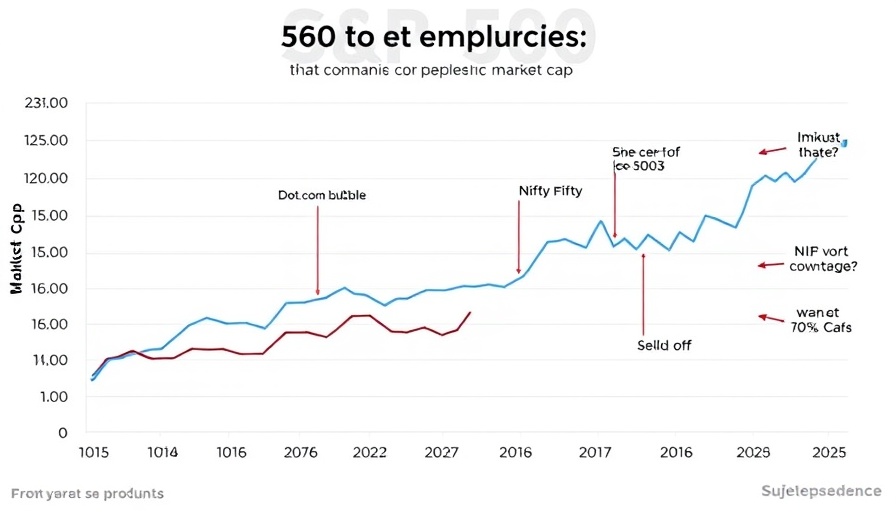
Understanding the Current Bubble Risk in the S&P 500
The recent warning from Deutsche Bank about a potential bubble risk in the S&P 500 has raised eyebrows among business professionals and investors alike. The analysts point to the strikingly high valuations of major tech companies, particularly Nvidia, which have concentrated the index's value heavily in a handful of businesses. This phenomenon is strikingly reminiscent of the dot-com bubble witnessed two decades ago, albeit on a different scale.
Deutsche Bank’s analysts, Jim Reid, Henry Allen, and Rajsekhar Bhattacharyya, highlight that Nvidia’s market capitalization now exceeds that of entire national stock exchanges—except for the U.S., China, Japan, and India. Combined with other tech giants like Microsoft, Alphabet, Apple, and Amazon, these top five companies make up an astonishing 30% of the S&P 500’s total value, dwarfing previous concentration levels. This lack of diversification raises significant concerns about market sustainability.
A Closer Look at Market Concentration
The current situation illustrates how the U.S. market comparisons to foreign markets have shifted dramatically. Previously, the gap was not nearly as pronounced—the U.S. is now almost five times larger than China and twenty times larger than many European markets. While concentration itself doesn’t definitively imply a bubble, it indeed signals the necessity for careful monitoring and skepticism regarding future performance. The future trajectory of the market appears reliant on a narrow base of companies, making it particularly vulnerable to shifts in tech valuations.
Macroeconomic Influence: Employment Trends and Market Performance
The outlook does not brighten further, as macroeconomic factors loom large on investor sentiment. Business experts like Gregory Daco from EY-Parthenon forecast a downturn in employment growth, which may further exacerbate market tensions. With predictions indicating a possible rise of merely 40,000 in nonfarm payrolls for August—a marked decline from earlier reports—it’s clear that labor market conditions are softening. Daco emphasizes that restrained hiring amidst economic uncertainties will shape employment trends in the coming months, suggesting a potentially grim outlook for the economy overall.
What Lies Ahead? Navigating Uncharted Territory
As we navigate through uncertain waters, the ongoing analysis by independence firms on market valuation trends becomes vital. Business professionals should remain vigilant and examine the broader implications of these developments in the tech sector. An understanding of these dynamics will not just prepare investors for immediate volatility but also aid in making informed decisions about long-term strategies. In this context, keeping an eye on local business updates and industry news, especially in the Bay Area, becomes increasingly significant.
In conclusion, the bubbling concern over the S&P 500, particularly driven by tech-heavy stocks, calls for heightened awareness among investors and professionals in the field. Maintaining agility and adaptability will be key to navigating this volatile market landscape.
 Add Row
Add Row  Add
Add 



Write A Comment